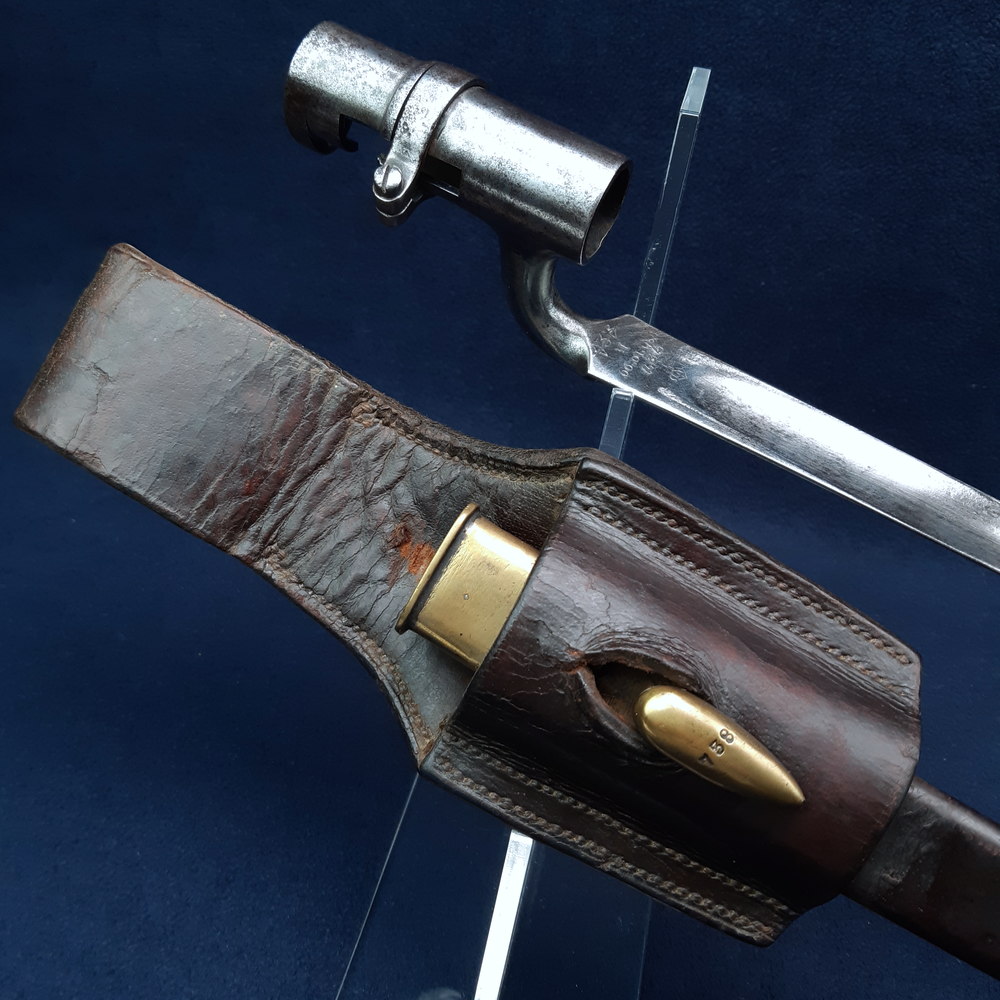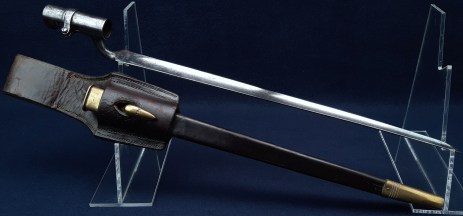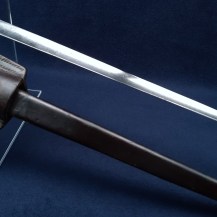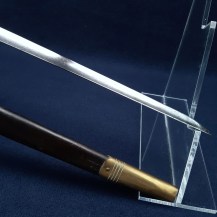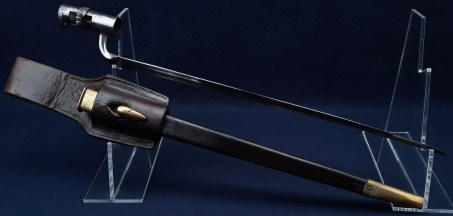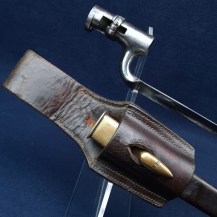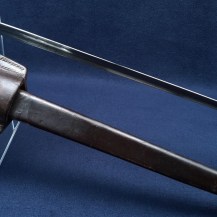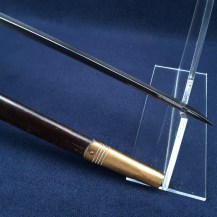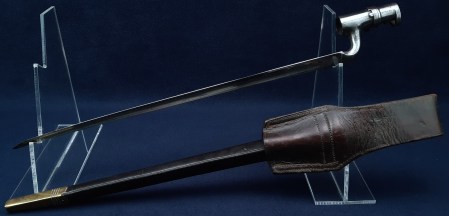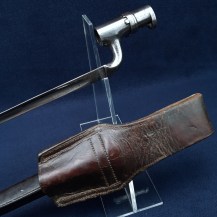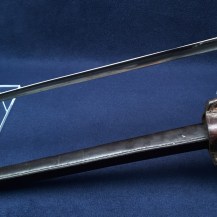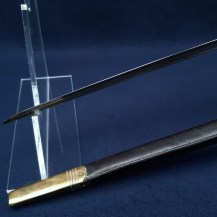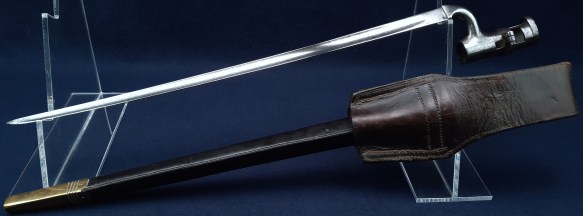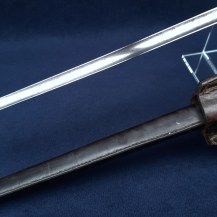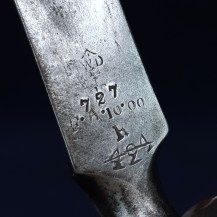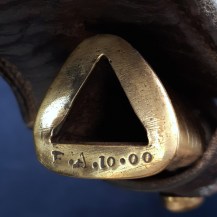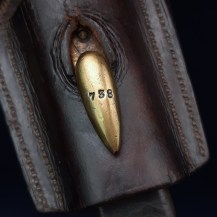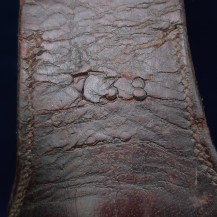British 1853 Pattern Socket Bayonet with Frog
Socket bayonet for the 1853 Pattern Enfield Rifle Musket, with fullered triangular blade, black leather scabbard with brass throat and chape pieces, and brown leather frog. Blade 17 inches in length, socket 3 inches, muzzle ring diameter 20mm.
The face of the blade is stamped at the forte with a War Department mark of a broad arrow over ‘WD’, as well a crown inspection mark – these marks are faint and the letter of the crown inspection mark is difficult to make out, but appears to be either ‘E’ (which would indicate the Royal Small Arms factory at Enfield) or ‘F’ (which would indicate production by a contractor in France). More clearly it is stamped with the serial number ‘421’, this later cancelled with a strikethrough, another serial number ‘727’, and ‘F. A. 10. 00’.
The scabbard is also stamped at the throat with ‘F. A. 10. 00’. Its frog hook is stamped with the serial number ‘738’. The frog is also stamped on its reverse side with ‘738’ and the date ‘1888’. The matching markings suggest that blade, scabbard and frog are an original grouping, not put together after service.
The size, formatting and position of the ‘F. A. 10. 00’ mark reminds me of the issue marks stamped at the throat of Lancaster bayonets. If they follow the same scheme then this bayonet was issued to a particular unit in October 1900, but which unit ‘F.A.’ would refer to I am uncertain of. Perhaps the Royal Field Artillery, which was created in 1899?
The frog is of a type used from at least 1861, frequently paired with the 1853 Pattern Bayonet as noted by Carter (see Bayonet Belt Frogs Part 1, Frog #60, Page 18). This design was formalised into the 1871 Pattern Valise Equipment, then carried through to the 1882 Pattern Valise Equipment.
The blade and socket have speckled patination, one spot of very light pitting to the face of the blade and some around the tip. The leather of the scabbard is very good with only a few light indentations; all of its stitching is intact. The leather of the frog has some surface cacking, one deeper crack running partway between the frog hook hole and the top of the scabbard loop. The frog hook hole is slightly dilated with creasing at its edges. A patch of abrasion where the edge of the brass throat piece rubs against the frog. Some denting and creasing to the belt loop. The brass fittings of the scabbard have no significant dents and an even light patina.

